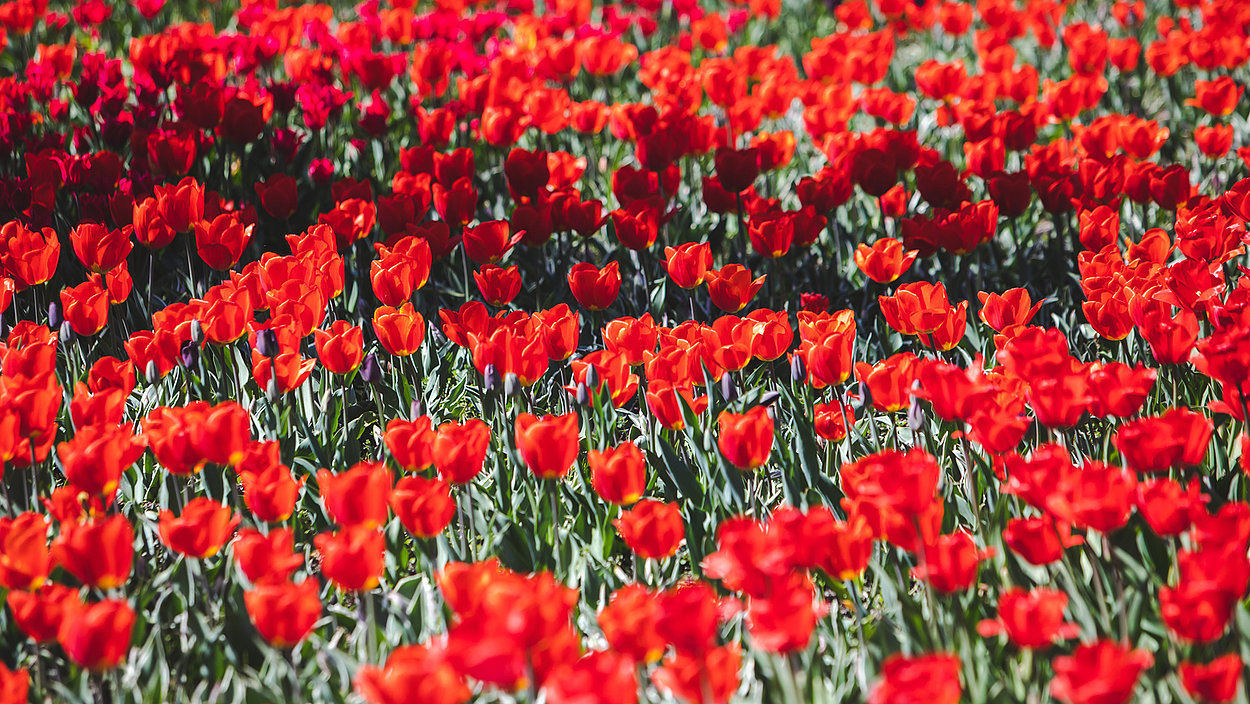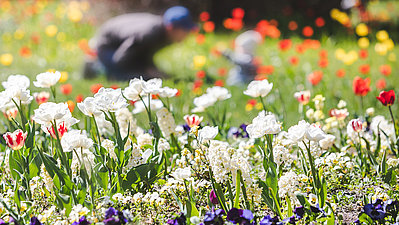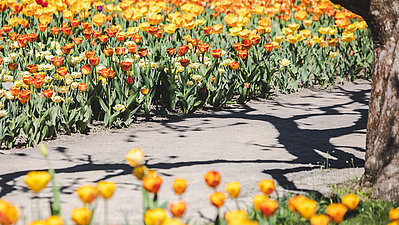Tulipan
When you think of tulips, Holland usually comes to mind. Tulips have been cultivated and bred there since the 16th century. The tulip reached the peak of its Dutch career during the so-called “tulip mania” of the 17th century, during which it became the most popular speculative object in Europe. The prices for tulip bulbs on the Dutch stock exchange multiplied within a very short time, until the “tulip mania” ended in 1637 with the first stock market crash in history.

However, the beginning of tulip historiography takes place in quite different parts of the world – namely in the Middle East, in particular in Persia and Turkey. Tulips have been adorning ceramics, miniatures and dresses there since the 9th century. Nowadays, Turkish mosaics and tiles are particularly famous, on which the tulip is one of the most common design elements.

The fascination for the tulip continues to this day. There are currently 180 different tulip species, divided into wild and cultivated tulips. Their colour and shape spectrum extends far beyond the classic image of the red, large-leaved blossom on a stem framed by two leaves.
Along the Kastanienallee up to Kalenderplatz of the Britzer Garden, the versatility of the tulip is revealed in variedly planted fields, meadows and beds. Here you can find simple and full blossoms, lily-flowered and fringed tulip species and even those with several flowers on one stem. The plantings are atmospherically contrasted with the surrounding meadows and fields of the park.

By the way, anyone who particularly appreciates the tulip can sponsor one of the numerous tulip fields in the Britzer Garten! Information about tulip sponsorships can be found under Donations & Participation.
